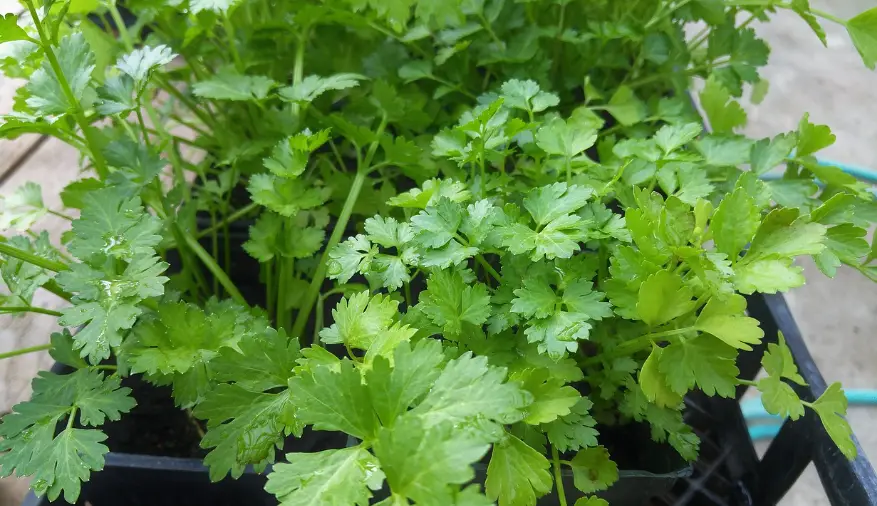Cilantro Sunlight Requirements: Optimal Light Levels

Cilantro is an herb that brings a burst of fresh flavor to many dishes, and its growth thrives under specific conditions. This article aims to explore how the right amount of sunlight can significantly impact cilantro’s growth, taste, and health. By understanding and applying the guidelines on sunlight requirements, you can ensure that your cilantro plants flourish, offering you the best in both taste and vitality.

Understanding Cilantro’s Sunlight Requirements
How to Ensure Ideal Sunlight for Cilantro Growth
Cilantro, an herb loved by many for its fresh taste, thrives with a specific amount of sunlight. Understanding the right balance is key to vibrant, healthy cilantro plants. Let’s dive into how you can achieve this.
Supplies:
- Cilantro seeds or starter plants
- Planting pot or garden space
- Watering can
Step 1: Select the Right Spot
Whether you’re planting in pots or directly in your garden, choose a location that receives ample sunlight. Cilantro loves the sun, but too much can be harmful.
Step 2: Understand Sunlight Needs
Cilantro prefers about 4 to 6 hours of direct sunlight a day. Morning sunlight is ideal as it is less intense than afternoon sun. If you live in a particularly hot climate, aim for the lower end of this range to prevent the plant from wilting.
Step 3: Monitor Daily Sunlight
Keep an eye on how much sun your cilantro is getting. If it’s in a pot, you can easily move it to a shadier spot if it seems to be getting too much sun. For garden-planted cilantro, observe the plant’s response to sunlight. If leaves turn pale or brown, they might be getting scorched.
Step 4: Provide Shade If Necessary
On extremely hot days, or if your garden doesn’t offer natural shade, consider creating some artificially. A simple garden umbrella or a piece of cloth can protect cilantro during peak sunlight hours.
Step 5: Water Regularly
Cilantro likes moist soil, so regular watering is crucial, especially in sunny areas. However, avoid overwatering as cilantro doesn’t like soggy roots. Check the soil’s moisture level before watering; it should be slightly dry to the touch.
Step 6: Watch for Bolting
Bolting is when cilantro starts to flower and go to seed, usually triggered by too much heat. If your cilantro is getting the right amount of sunlight but still bolting, it might be experiencing too much heat. Providing some shade during the hottest parts of the day can help prevent this.
By following these steps, your cilantro will receive the ideal amount of sunlight for robust growth. Remember, the key to healthy cilantro is balancing sun exposure with adequate water and shade. Happy gardening!

Effects of Too Much or Too Little Sunlight
Sunlight, an essential factor for cilantro, needs a careful balance. Too much or too little sunlight impacts cilantro’s growth, taste, and lifespan. Here’s what happens and how to manage sunlight for your cilantro plants effectively.
Too Much Sunlight
Cilantro prefers cooler environments and gentle sunlight. In conditions where it receives harsh sunlight for prolonged periods, several issues arise:
- Wilting Leaves: The first sign of excessive sunlight is wilting leaves. Cilantro leaves may appear droopy and lose their vibrant green color.
- Burning: Continuous exposure to intense sunlight can cause leaf burn, where leaves turn brown and brittle.
- Bolting: While it’s mentioned that providing shade can prevent bolting, it’s crucial to understand that excessive sunlight speeds up the bolting process. This premature shooting of flower stalks leads to the plant focusing its energy on flowering and seed production rather than leaf growth, affecting the taste.
Too Little Sunlight
On the flip side, inadequate sunlight has its downsides:
- Leggy Plants: Cilantro growing in low light tends to stretch toward the light source, resulting in long, thin, and weak stems. This phenomenon, known as “etiolation,” compromises the plant’s robustness.
- Pale Leaves: Insufficient sunlight leads to a lack of chlorophyll, causing cilantro leaves to turn pale or yellowish. This not only affects the plant’s aesthetic but its health as well.
- Reduced Flavor: Cilantro’s distinctive flavor may diminish when it doesn’t get enough sunlight. The full development of essential oils responsible for its taste relies on adequate light.
Managing Sunlight Exposure
- Morning Sun: Ensure cilantro receives gentle morning sunlight and is protected during the harsh afternoon light. This balance prevents both wilting and weak growth.
- Use of Shades: Implementing shades or cloth covers during peak sunlight hours can protect cilantro from too much sunlight without plunging it into darkness.
- Artificial Lights: For indoor cilantro plants struggling with natural light, artificial grow lights can provide the necessary spectrum of light without the heat stress of direct sunlight.
- Monitor and Adjust: Regular observation helps in taking timely measures. If you notice signs of distress, adjust the plant’s location or the amount of artificial light to find a healthy balance.
In sum, cilantro thrives in a delicate balance of sunlight—not too much, nor too little. Observing your plant’s response to its light conditions and making necessary adjustments ensures a healthy, flavorful cilantro that enhances your culinary creations. Remember, the goal is to provide an environment where cilantro can flourish with leaves rich in flavor and vitality.

Adjusting Sunlight Exposure for Cilantro
Turning our focus now towards optimizing your cilantro’s growth through effective sunlight management, let’s dive into the practical steps. Given cilantro’s unique sunlight preferences, achieving the perfect balance is key. Here’s how to do it:
Step 1: Employ a Sunlight Meter
Utilize a sunlight meter to precisely measure the intensity of sunlight your cilantro receives. This gadget offers clarity, moving beyond guesswork to ensure your plant gets its ideal daily dose of sunlight.
Step 2: Create a Sun Schedule
Based on the sunlight meter’s readings, craft a sunlight schedule. Cilantro thrives on 4 to 6 hours of sunlight, primarily favoring the gentler morning rays. Adjust their exposure to match this criterion, especially during the summer when the afternoon sun intensifies.
Step 3: Implement a Mobile Garden Setup
Consider a mobile garden setup for your cilantro. Planting in containers or on trolley bases allows for easy movement, making it feasible to shift your cilantro in accordance with its sunlight needs throughout the day.
Step 4: Install Adjustable Shades
Set up an adjustable shading system, such as retractable awnings or shade cloths on frames. These can be effortlessly adjusted to either filter intense sunlight during peak hours or retract to let in more light when the sunlight mellows.
Step 5: Reflective Mulches
Apply reflective mulches around your cilantro. This innovative approach gently increases sunlight exposure for cilantro planted in somewhat shadowy areas, effectively brightening the environment without resorting to artificial light sources.
Step 6: Adapting to Indoor Conditions
For indoor cilantro plants, strategically place them near windows that receive ample morning light. Should natural light be insufficient, consider LED grow lights, setting them on timers to simulate a natural sunlight cycle, ensuring your cilantro receives its necessary light quota.
Step 7: Routine Observation and Adjustment
Lastly, the key to successful cilantro growth lies in observation and flexibility. Regularly monitor your plant’s response to its light conditions, ready to adjust its exposure with the changing seasons or varying weather patterns. This proactive approach ensures your cilantro remains vibrant, flavorful, and healthy.
By following these steps methodically, adjusting sunlight exposure becomes an achievable task. Accurate monitoring, coupled with strategic adjustments, empowers you to provide the optimal light conditions for your cilantro, paving the way for a bountiful and flavorful harvest.

Mastering the art of providing the perfect amount of sunlight for your cilantro plants can transform your gardening experience and elevate the quality of your harvest. Through careful observation, strategic adjustments, and a bit of creativity in managing sunlight exposure, your cilantro can achieve its full potential. Ultimately, the effort you put into optimizing sunlight for your cilantro will reflect in the vibrant flavors and robust health of your plants, making every dish they grace truly remarkable.
